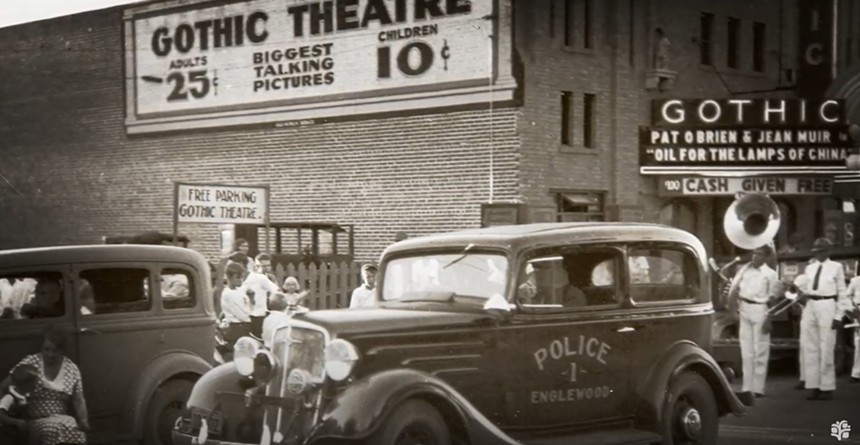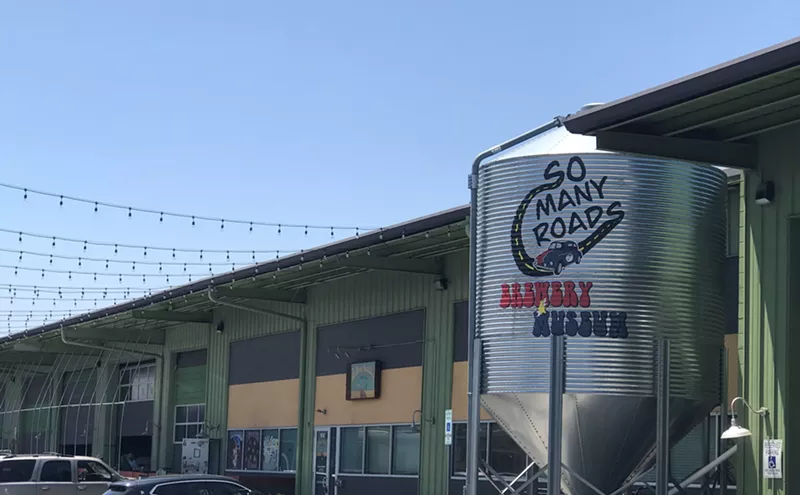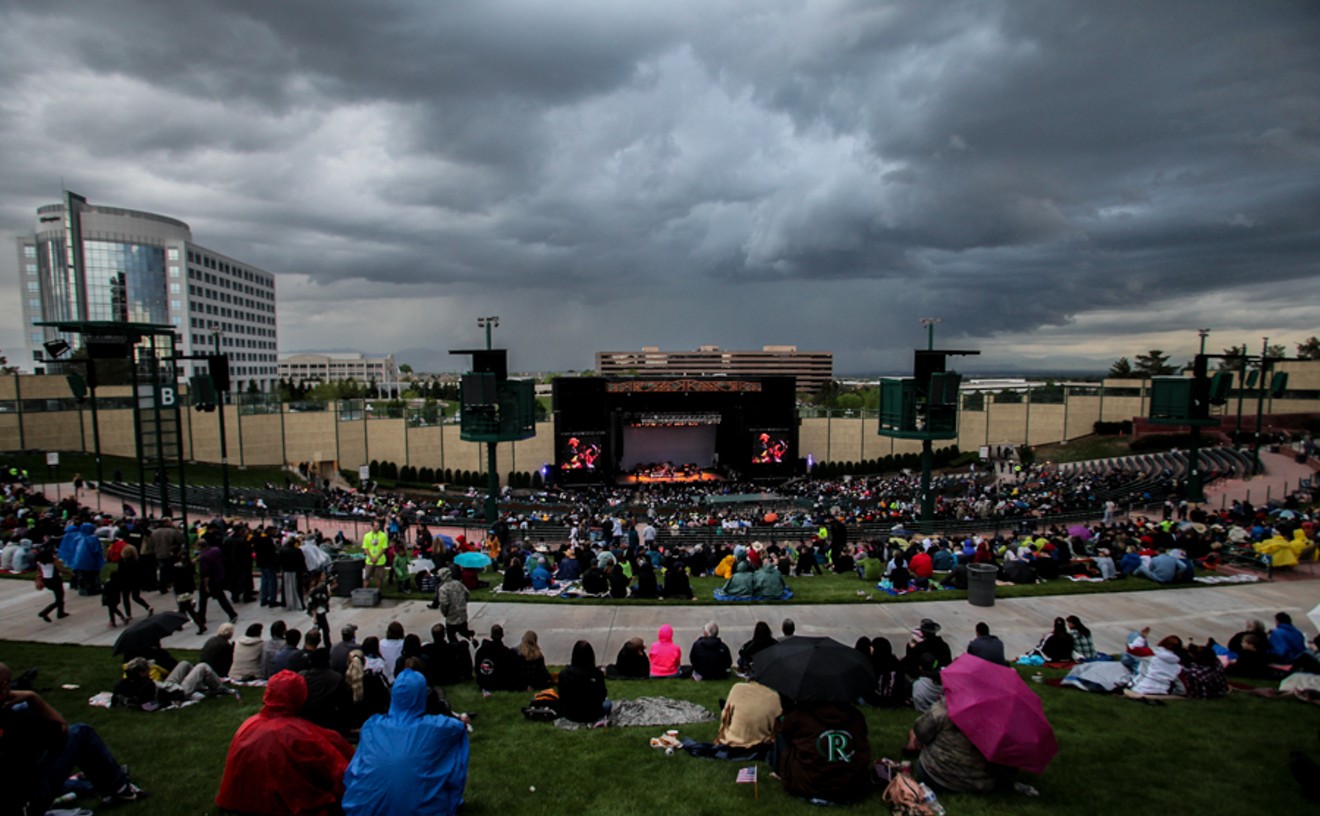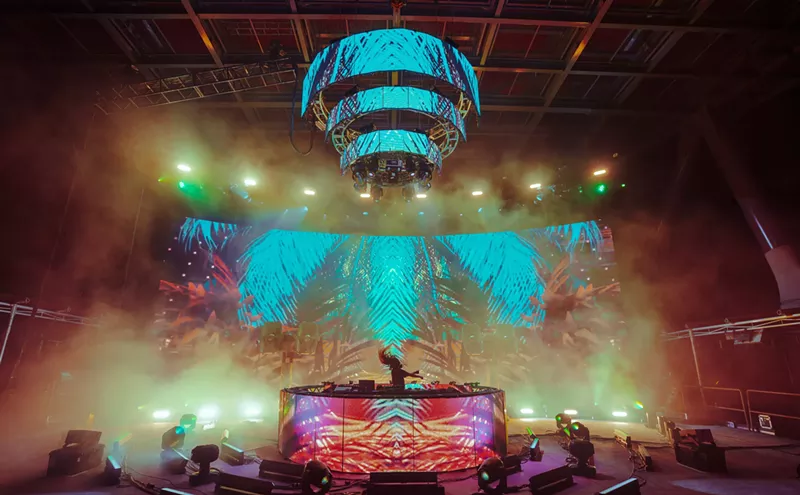This watershed moment is just one of many in the Gothic's storied history.
"We love the Gothic Theatre because it's a 1,000-cap room, so it's pretty intimate," says general manager Kevin Anderson. "The coolest aspect of that venue is its Art Deco architecture. It's immediately recognizable. As soon as you walk through the door, you will notice that this venue is unlike any other AEG location. It's a beautiful, old-school-style theater that opened as a movie theater but has been a concert hall for most of its recent life. And it's tall: The ceiling is high, so we have all these beautiful sight lines from the balcony. You can get a great view from anywhere in the house, but the sight lines on the balcony make it one of the coolest places to watch a show in the entire city."
There is some debate about when the venue at 3263 South Broadway first opened as a movie theater, with most agreeing it was in the 1920s but disagreeing on the exact year. But Englewood historian Doug Cohn says it was built in 1929 by architect and builder Wilbert (Bert) Rosche, and Ida May Nicholl, a relative of Rosche's, supports this claim, stating that her family's records indicate the venue opened in the late 1920s.
"My husband's uncle designed and built the building in 1929," Nicholl says. "People often ask why it's called the Gothic Theatre; it's because of the venue's European Gothic design. It has changed over the years, especially since they cut down the exterior, but you can still see Bert's original Art Deco style in the space." The Gothic was not the city's first motion-picture theater — that would be the Englewood Theatre, built in 1912 at 3460 South Broadway — but it did introduce the greater Denver area to the concept of "talkies." Its foray into the world of synchronized sound drew massive crowds eager to witness the magic of the first talking pictures.
"Hollywood's heyday of dramas, slapstick comedies, musicals, Westerns, newsreels and serials came to Englewood through the Gothic Theatre," writes Ruth Slack in the theater section of her book Englewood, Colorado: Its People and History. "The price for a show was 25 cents for adults and ten cents for children.”
A popcorn wagon pulled by a pony was parked in front of the theater, selling candy, drinks and popcorn for five cents each and offering pony rides. For many years, the Gothic also sponsored an annual Easter egg hunt for children in the vacant lot next door and in the park at Hampden and Broadway.
The late 1930s saw a modernization of the front facade, but the interior's original Art Deco charm remained untouched. However, as decades passed and multiplexes became more popular, the Gothic's relevance waned. Ownership of the space changed hands multiple times, but each new owner proved unsuccessful in their attempts to revive the building.
The Gothic became a theater for adult films before closing permanently in the early 1980s, after which it sat abandoned except for a few rock shows here and there. These were not one-hit wonders, either: The Beastie Boys, Nirvana and Phish all performed during this time. In July 1992, then-owner Doug Kauffman announced that he would invest $200,000 through Gothic Enterprises Inc. to renovate the aging building into a high-quality facility.
Plans were to convert it into an assembly hall for concerts, seminars, wedding receptions and private catered parties by the late fall of 1992, but that project never came to fruition. Just before the building was slated for demolition, a 37-year-old former movie prop master, Steve Schalk, and his partner, Todd Kinion, saved the Gothic from the wrecking ball. They bought the place for $175,000 in 1998 and transformed it into a live-music venue.
Schalk and Kinion had to significantly remodel the space to turn it into a concert venue, but they took great pains to preserve the place's historic Art Deco style. The Gothic reopened its doors on June 23, 1999, with a performance by the Rebirth Brass Band. Under the pair's management, the theater hosted a plethora of high-profile acts, including Blue Öyster Cult, the Black Keys, the Cranberries and Lady Gaga, rekindling its legacy as a cultural community hub on South Broadway.
Live Nation briefly booked the venue in the late 2000s, but Schalk decided not to renew the contract in March 2010. After a few years of independent booking, AEG took over booking and operations of the theater at the start of 2013, with Schalk remaining the owner.
"I remember walking into that building, and I had maybe seen one show there before we'd taken over, and there were all these little things we needed to change," GM Anderson recalls. "There was nothing wrong with the room, but we knew we were going to bring in some massive shows that needed that high-volume bar that everybody expects in our buildings, so the bar needed to be upgraded immediately."
Following a few years of getting acquainted with the space, AEG updated the Gothic's sound system in 2018. "We put in a nice, big, beefy PA system," Anderson says. "Maybe minus the Mission, it’s the best-sounding room in our portfolio because that PA bumps. It could easily be hung in the Ogden or Fillmore, a much bigger room, and still carry it. It's an oversized PA for a 1,000-cap room, but it sounds incredible. One of the first shows afterward, we had Marcus King, a well-known Nashville-style guitarist, and he looked at me and said, ‘Oh, wow, this is night and day' — it was that good. That's why we paid for the improvement. We knew we were going to be happy with that building."
In November 2022, AEG officially acquired the spot for $2.07 million. Anderson estimates that the Gothic hosts approximately 130 events annually, ranging from concerts to private functions and community engagements. The venue sees an average attendance of about 800 people per event, which translates to roughly 104,000 visitors each year. With a capacity of 1,000, it offers a more personal concert experience, and it attracts a wide array of acts, from burgeoning local bands to internationally recognized artists.
"The cool thing about the Gothic is that whatever you like — hardcore, electronic, classic rock or bluegrass — we do it all," Anderson says. "We're all over the place; it's such an eclectic venue. We get this diverse mix of artists coming through all of our rooms, but since more bands can sell a thousand tickets than bands that can sell several thousand tickets across all genres of music, we stay really busy."
Over the years, the space has also become a hot spot for comedy. Anderson attributes this to the venue's ability to host a large crowd in an eclectic setting. "We've had countless Netflix specials filmed in there; I think the most recent was Iliza Shlesinger, but I've done so many over the years that I've forgotten more than I remember," he says. "When we seat the whole floor, we can do, like, 400 to 500 seated, which is a nice number for comedy shows. For those larger acts who want to sell more tickets and make more money, they play the Gothic."

The Gothic Theatre was the first movie theater in the area to show "talkies," and it now hosts around 130 live performances per year.
City of Englewood YouTube
Anderson encourages anyone who hasn't yet experienced the historic Gothic to plan a visit, noting that the venue recently received a Best of Denver award for Best Venue for Public Transportation, with bus stops nearby and the light rail station only a short walk away.
"We haven't done much in the way of renovating the room. We've upgraded paint and stuff like that, but we've kept the bones intact," Anderson says. "The Art Deco architecture is fantastic; we want to maintain the old-school aesthetic because it enhances the performances in the space. In May, we'll have everyone from Donny Benet to Psychedelic Porn Crumpets, so come on out. Don't be afraid because it's in Englewood — it's really not that far."
Learn more about the Gothic Theatre and its upcoming shows at gothictheatre.com.












